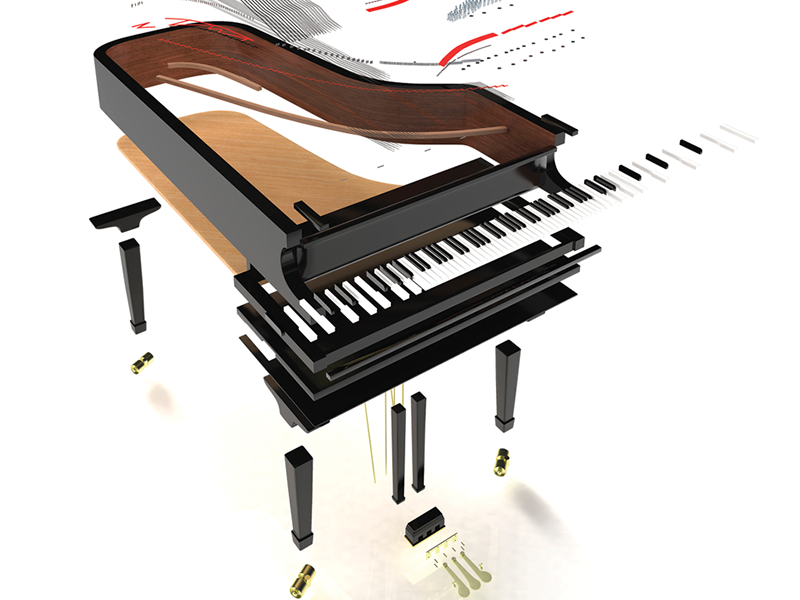See inside a grand piano

[fototag id=”grandpianocutaway”]
Pianos work by transmitting the vibrational energy of taught wire strings into a soundboard, which in turn converts the vibrational energy into sound.
The piano achieves this through both its construction materials and action mechanisms. Pianos consist of five main parts: the frame, soundboard, strings, hammers and keys. The frame is constructed from metal and serves as a stable, immobile platform from which its strings (metal wires) and soundboard (vibration to sound conversion mechanism) can vibrate efficiently.
Steel is used as it helps mitigate unwanted vibrational energy being transmitted to the rest of the piano and surrounding area, a problem that leads to distortion of produced sounds. The hammers act as a striking mechanism, and when the piano’s keys are pressed by the player, they rise to strike their corresponding strings in order to produce vibrational energy.
The physics of the piano work in a chain-reaction. When a key on the keyboard is pressed, a complex system of jacks, pivots and levers raise a suspended hammer upwards to strike an overhung string, as well as a string damper (a felt block) that, once the string is stuck, comes into contact with the string and ceases its vibration.
In the short time between the hammer striking the wire and damper ceasing its motion, the vibrational energy is carried down the string and over a ‘bridge’, a raised bridge-shaped structure over which the string is tightly stretched.
The bridge receives this vibrational energy and transfers it into the piano’s soundboard, a wooden board chosen for its resonant properties that through the principle of forced vibration vibrate at exactly the same frequency of the struck string. Consequently, due to the large, expansive size of the board, the quiet tone created by the string is increased, and produces a loud note.





